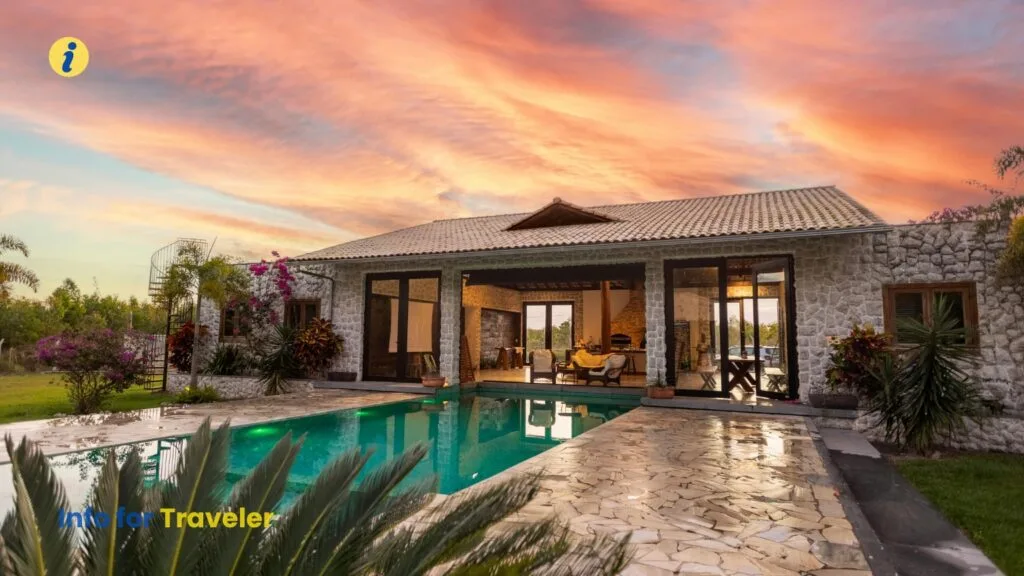Navigating the world of vacation rental pricing can feel like solving a tricky puzzle. Whether you’re managing a cozy cabin or a luxury villa by the sea, finding the right pricing strategy is crucial. Set your rates too high, and guests may look elsewhere. Too low, and you risk undervaluing your property and losing out on well-earned profits.
Vacation rental pricing strategies are more than just numbers. They blend market demand, seasonality, occupancy trends, and unique property features. Knowing how these elements work together helps you position your rental competitively and keep your calendar booked.
In this guide, you’ll learn why smart pricing matters, explore the key factors that affect vacation rental pricing, and discover how to build an approach that maximizes your earnings.
Why Vacation Rental Pricing Strategies Matter
- Boosts brand reputation
- Adapts to season changes
- Attracts right guests
- Increases yearly earnings
Getting your pricing right isn’t just about paying your bills. It shapes how people see your brand, brings in the right guests, and plays a big role in how well your rental does over time. A smart pricing plan lets you change your rates when needed. You can charge more during busy times and still stay attractive when things slow down.
Even more important, good vacation rental pricing strategies help you keep up with changes in seasonal demand, local events, or sudden surprises in the market. Owners who keep an eye on their prices usually do much better than those who never change them. They fill more nights and keep their income steady all year.
When you take time to plan your prices well, you’re not just guessing. You’re using real facts about your area, your property, and what guests want. This means you can handle busy travel seasons without missing out on profits. And when things slow down, you’re ready to offer deals that keep guests booking.
In the end, a smart pricing strategy gives you more control and peace of mind, knowing your rental is working for you all year long.
Key Factors That Affect Vacation Rental Pricing
When considering the key factors that affect vacation rental pricing, several stand out.
1. Location
Rentals close to popular places, beaches, or busy city spots usually cost more. Guests love staying where they can walk to shops and sights.
2. Seasonality
Demand jumps in summer, during holidays, or for special events. In ski towns, winter is the busy season. People plan trips around weather and big local happenings.
3. Size and amenities
Homes with more bedrooms, private pools, hot tubs, or fancy kitchens catch more attention. Extra features make guests feel their stay is special and worth paying for.
4. Market competition
The prices of other rentals like yours nearby help set what you can charge. Keeping an eye on them helps you stay fair and competitive.
5. Quality of photos and listings
Sharp pictures and strong descriptions can support a higher price. Guests feel more sure about booking when they see clear, inviting images.
6. Guest reviews
Great ratings build trust and let you feel good about charging a bit more. Happy guests leave kind words that attract even more people.
Understanding these factors helps you fine-tune your pricing, keeping you ahead of local competitors while still appealing to guests.
Understanding Rental Demand Seasonality and Occupancy Rate Factors
Rental demand seasonality means that travel interest goes up and down during the year. Think about busy beach towns in July compared to how quiet they get in January. When you know these patterns, you can change your prices to make more money when lots of people want to travel and keep your rental booked when fewer people do.
By understanding these trends, you can avoid charging too little when everyone wants to visit or too much when it’s slow, which keeps your rental both busy and profitable.
- Plan for busy seasons
- Watch local events
- Adjust prices smartly
In the same way, occupancy rate factors like local events, weather, or even how easy it is to fly into your area can change how full your calendar gets. For example, if a small town hosts a big sports game, many people might look for places to stay, and demand could double in just a day.
Understanding Luxury Vacation Rental Pricing Factors
- Luxury Perks – High-end extras like chefs and private pools give luxury value.
- Privacy – Secluded spots or private beaches let guests escape crowds and pay more.
- Reputation – Strong reviews and trusted service justify charging premium rates.
- Longer Stays – Discounts for long stays help fill your calendar and boost earnings.

When talking about luxury vacation rental pricing factors, things get even more exciting. Guests booking fancy homes aren’t just paying for a place to sleep. They’re paying for a special, high-class experience that feels like a dream vacation.
These travelers look for extra touches that make their stay stand out. Because of this, luxury rental owners can charge much more than normal stays.
Exclusive amenities:
Fancy extras like private chefs, big infinity pools, movie theaters, or personal concierge help push prices higher. Guests love these little luxuries that turn a trip into something truly unforgettable.
Privacy and seclusion:
A villa on a quiet hill or a house with its own stretch of beach means guests can relax without crowds. They’ll happily pay more to get away from busy places.
Brand reputation:
If you’re known for top service and have loads of 5-star reviews, people trust you more. This means you can ask for higher rates and guests will still book.
On top of these, luxury rentals often use smart pricing tricks. Many give special deals for week-long stays, so guests stay longer and owners make more money without gaps in the calendar.
A beautiful luxury home with all the right features can keep guests coming back year after year. That’s why it pays to know these factors and price your property to match the amazing experience you offer.
How Occupancy Influences Vacation Rental Rates
Many owners overlook how occupancy influences vacation rental rates, but it’s actually one of the most important things to watch. If your place sits half-empty most of the time, your price might be too high. Guests could be picking cheaper places instead.
On the other hand, if your occupancy is at 95% all year, your price might be too low. That means you’re likely missing out on extra money you could be making. The best plan is to aim for a good balance. For short-term rentals, that often means staying around 70–85% occupancy with solid nightly rates.
Using tools like dynamic pricing software can help a lot. They change your prices automatically based on demand. This way, you can avoid mistakes and make sure you’re getting both lots of bookings and good income.
Comparison of Pricing Models Across Property Types
Every type of vacation rental has its own best pricing strategy. What works for a small city apartment might not work at all for a luxury villa or a mountain cabin. Here’s a closer look at how different property types usually handle pricing and what kind of occupancy goals owners often aim for.
| Property Type | Typical Pricing Strategy | Average Occupancy Goals |
| Urban Apartments | Lower weekday rates, higher on weekends and holidays | 80% to 90% |
| Beachfront Villas | Premium rates during peak seasons, off-season specials | 60% to 75% |
| Luxury Estates | High nightly rates with longer stay minimums | 50% to 65% |
| Mountain Cabins | Top prices in winter, lower rates in spring and fall | 65% to 80% |
This shows why you need to shape your pricing strategy to match your property and market. A city apartment near business centers might fill up during the week, while a mountain cabin does best in snowy months. By knowing your type and local demand, you can set smarter prices and keep your rental busy all year.
Case Studies: Real-World Success Stories
Case Study 1: Smart Price Raise Leads to Top Occupancy
User: Mark (City Apartment Host)
Mark noticed his city apartment was booked nearly all the time. Wondering if he could earn more, he raised his prices to match the highest rates in his area.
Even after increasing prices, bookings kept rolling in. His occupancy stayed close to 94%, showing he had been underpricing his rental for a long time.
Results: Mark earned more money each month while still keeping his calendar almost fully booked.
Case Study 2: Lowering Prices Fills Empty Calendar
User: Saira (Coastal Rental Owner)
Saira managed a cozy rental near the coast but struggled with only 35% occupancy in her first year. Realizing her prices were too high, she started dropping rates whenever her calendar was still empty a week out.
This change worked. Her occupancy climbed to about 60%, with most bookings coming just two days before guests arrived.
Result: Saira kept her property active and earned steady income, even if many stays were at slightly lower prices.
Professional Insights on Setting Optimal Rental Prices
Vacation rental consultants often highlight a few critical ideas when helping owners set the best prices. First, it’s essential to know your costs inside out. This means being clear on what you spend for cleaning, maintenance, and any platform fees. When you understand all your costs, you can make sure your prices cover them and still leave you a healthy profit.
Experts also suggest you test and refine your prices. Start with rates that match other places like yours in the area. Then keep an eye on your occupancy each month and adjust if needed. This way, you can see what guests are willing to pay and avoid leaving money on the table.
Another key piece of advice is to invest in guest experience. A spotless home, small thoughtful touches, and quick replies to questions all help justify higher prices. Happy guests often leave glowing reviews, which makes future guests trust you more.
Finally, many consultants recommend using data tools like PriceLabs, Beyond, or AirDNA. These apps track changes in local demand, so you can tweak your rates in real time instead of guessing.
- Cover all your costs
- Offer a great experience
- Use smart pricing tools
By following these professional tips, you can avoid common mistakes and set your rental up for long-term success.
Conclusion
Setting the right vacation rental pricing strategy isn’t something you do just once and forget. It’s a careful, ongoing process. By learning what drives rates, from local demand and seasonality to occupancy trends and luxury features, you can fine-tune your prices to match exactly what the market wants.
Smart owners keep an eye on their occupancy levels, adjust prices for busy or quiet months, and understand how even small extras can let them charge more. Whether it’s a beachfront villa or a cozy city apartment, knowing your costs, testing rates, and investing in guest experience all pay off.
Tools like PriceLabs or AirDNA take out the guesswork, so you can tweak rates with real data, not just hope.
In the end, the best pricing strategies balance healthy occupancy with strong nightly rates, giving you a steady income and happy guests who come back again and again.
Want to explore more insights like this?
Visit our travel blog for expert guides, owner tips, and destination ideas that keep your bookings thriving all year long. Start your journey to smarter hosting today!
Explore our comprehensive & innovative Guide on Schengen Visa Applications
FAQs
1. What is typically included in a vacation rental price?
Most vacation rentals include the cost of staying in the home plus utilities like water, electricity, and Wi-Fi. Cleaning fees, local taxes, or security deposits are often charged separately.
2. Why do vacation rental prices change so much?
Prices often go up during busy seasons like summer, holidays, or special local events. They drop in slower months to keep bookings coming in. This is all because of rental demand seasonality.
3. How occupancy influences vacation rental rates?
If your place is booked almost every night, your price might be too low. If it sits empty, it may be too high. Most experts say the sweet spot is around 70–85% occupancy, balancing good rates with steady bookings.
4. What is dynamic pricing and should I use it?
Dynamic pricing means adjusting rates daily or weekly based on demand, events, or competitor prices. Many owners use tools like PriceLabs or Beyond to do this automatically so they earn more without constant guessing.
5. What are common mistakes owners make with pricing?
Many owners set rates too high, scaring guests off, or too low, leaving money on the table. Some forget to watch local competition or don’t adjust prices for weekends and holidays.
6. What factors raise the price of luxury rentals?
Luxury vacation rental pricing factors include private pools, chefs, stunning views, and total privacy. Guests pay extra for a “wow” experience and top service.
7. How can guest reviews affect my pricing?
If you have lots of 5-star reviews, guests trust your place and will pay more. Bad reviews might force you to lower rates until you improve things like cleanliness or communication.
8. Should I lower prices for last-minute openings?
Yes. If your calendar still has empty nights a week out, dropping prices can fill those gaps. It’s better to earn something than let nights go completely empty.
9. How does local competition impact my rates?
Nearby rentals with similar features set the tone for what guests expect to pay. If your rates are way above or below theirs, it could hurt bookings. Always keep an eye on what neighbors charge.
10. What can I do to justify higher rates?
Invest in guest experience. A spotless home, quick responses, nice extras like welcome baskets or good coffee all help guests feel it’s worth paying a little more.










